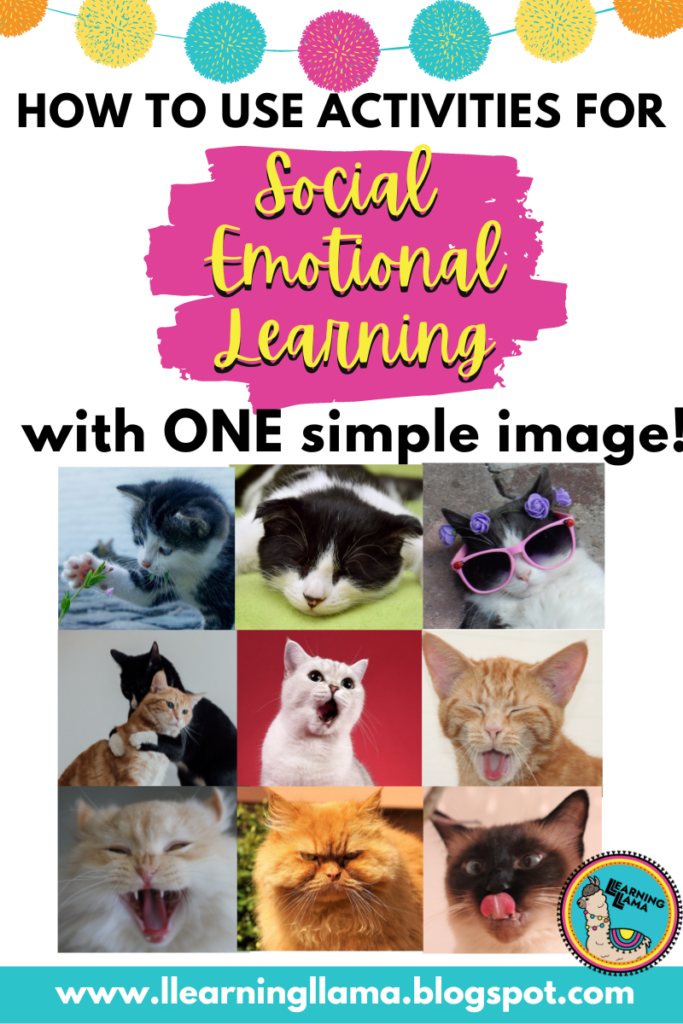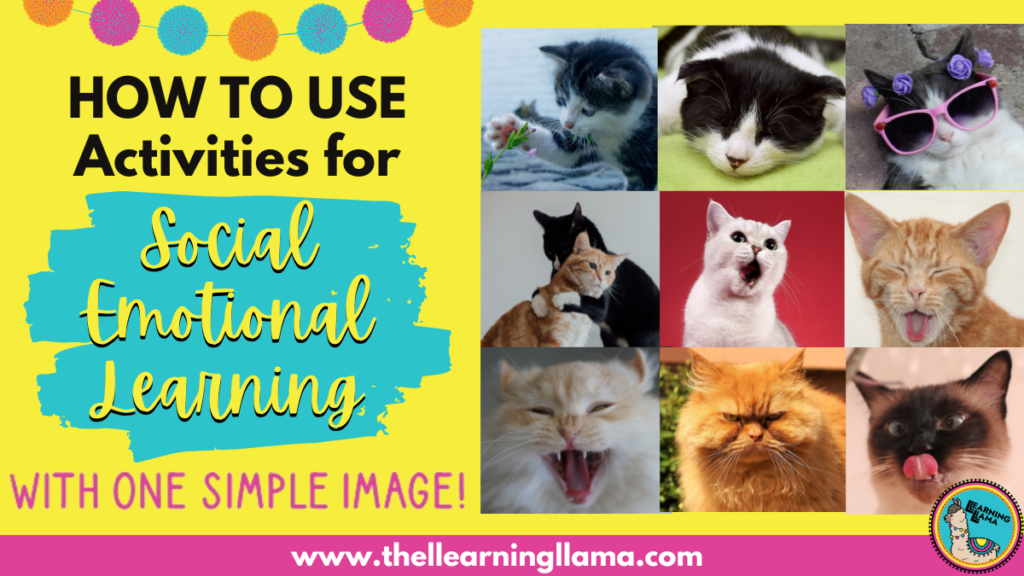I’ll admit… At first, I was not sure how to incorporate activities for social emotional learning in my high school Spanish classroom. I was hesitant because I thought I would lose time teaching Spanish content. But this past year, when my colleague would share her lessons with me, almost every class started with a social emotional check-in question. I was shocked that she had incorporated social emotional learning in every lesson, in the target language, and it didn’t eat up too much of our class time. Plus, it helped me develop better relationships with my students. They felt more comfortable sharing their feelings, accomplishments, and struggles with me.
Social Emotional Learning Definition
The Committee for Children defines social emotional learning as “the process of developing the self-awareness, self-control, and interpersonal skills that are vital for school, work, and life success.” When you think about a world language classroom, we are already helping our students develop these important skills each and every day, especially through self-awareness and interpersonal skills.
Our students spend the entire time communicating when they are in our room and one-third of the communicative skills is interpersonal. We also focus on interpretive and presentational. In our classes, we also focus on self-awareness, as students become culturally competent. They must first be aware of their own culture, habits, traditions, etc. before we can introduce and compare cultures around the world.
So, how can we tie in social emotional learning to what we are already doing in the world language classroom? Check out my favorite activities below.
Activities for Social Emotional Learning
So I have to ask, on a scale of 1-9, which llama are you? For me, I’m definitely feeling a little bit like #8… hungry! With this one image (filled with nine smaller images), I’m sure you laughed, thought about your day, and hopefully your students aren’t making you feel too much like #3.
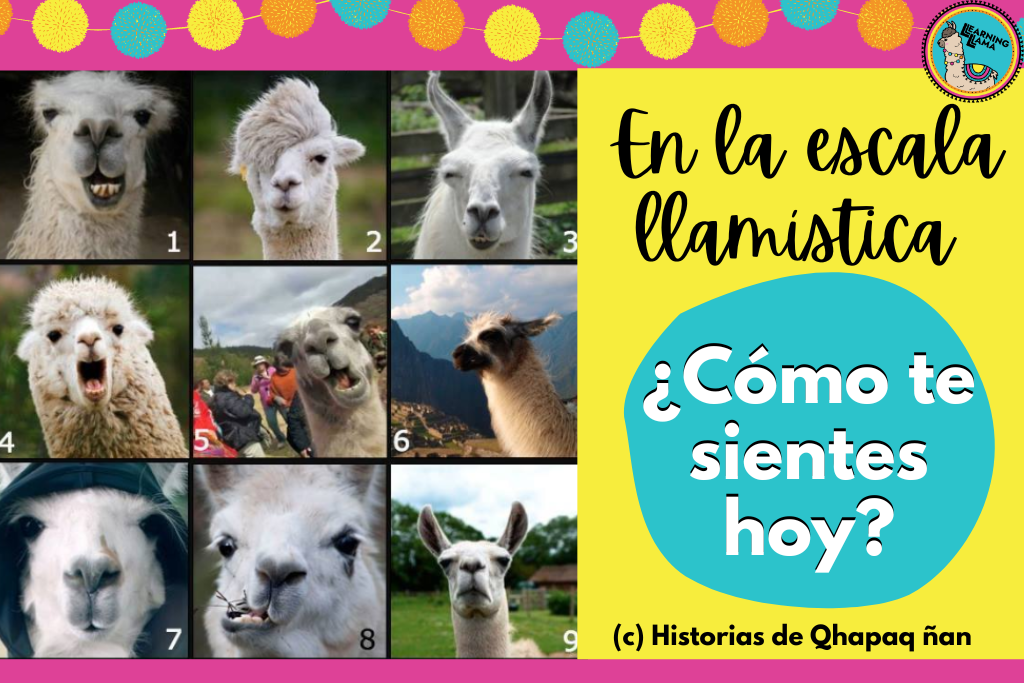
Going back to the lessons that my colleague would share with me… Every bell ringer was a series of 9 memes or photos for students to choose how they were feeling that day. On a scale of 1-9, which dog are you today? Or on a scale of 1-9, which pumpkin are you? Just like the llama one I showed you above.
Where can I find social emotional check in images?
I’m sure you’ve seen these images on Instagram or Pinterest before, but when you’re looking for something specific for a class, like an animal one during an animal unit or artwork during a Hispanic art unit, it’s helpful to have them all in one place! I have compiled my favorites (and I keep adding more!) to my Pinterest SEL check-in page, which you can follow here. Also, a quick google search for “mood scale 1-9” will give you tons of other options, as well!
You can grab this set of 26 fun and unique SEL images that I created for my students!
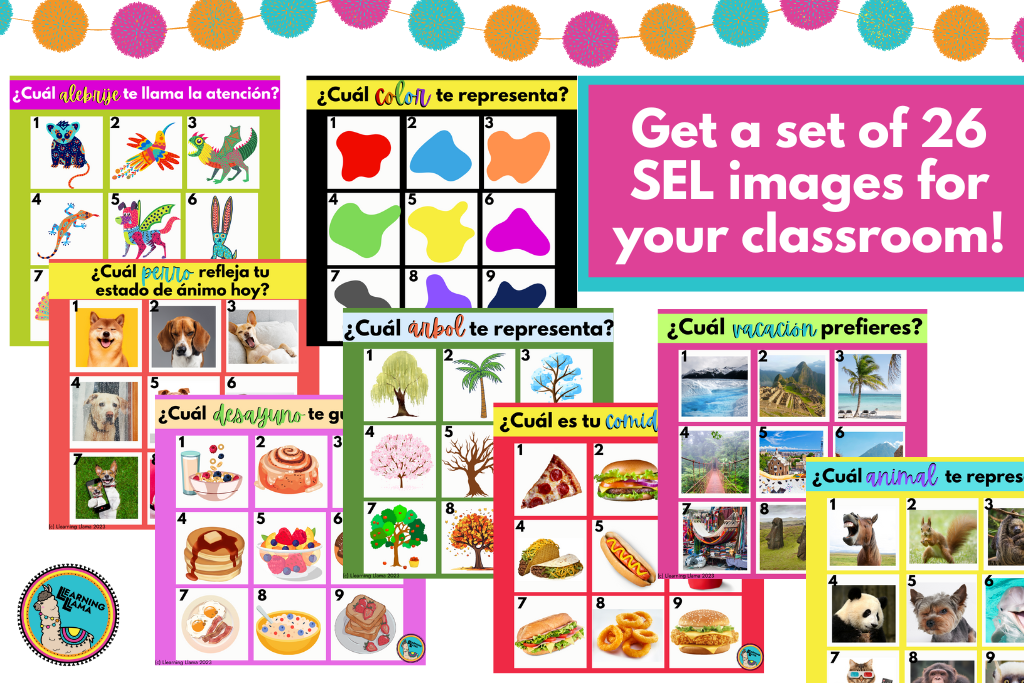
Here are some of my favorite images that I used this year!
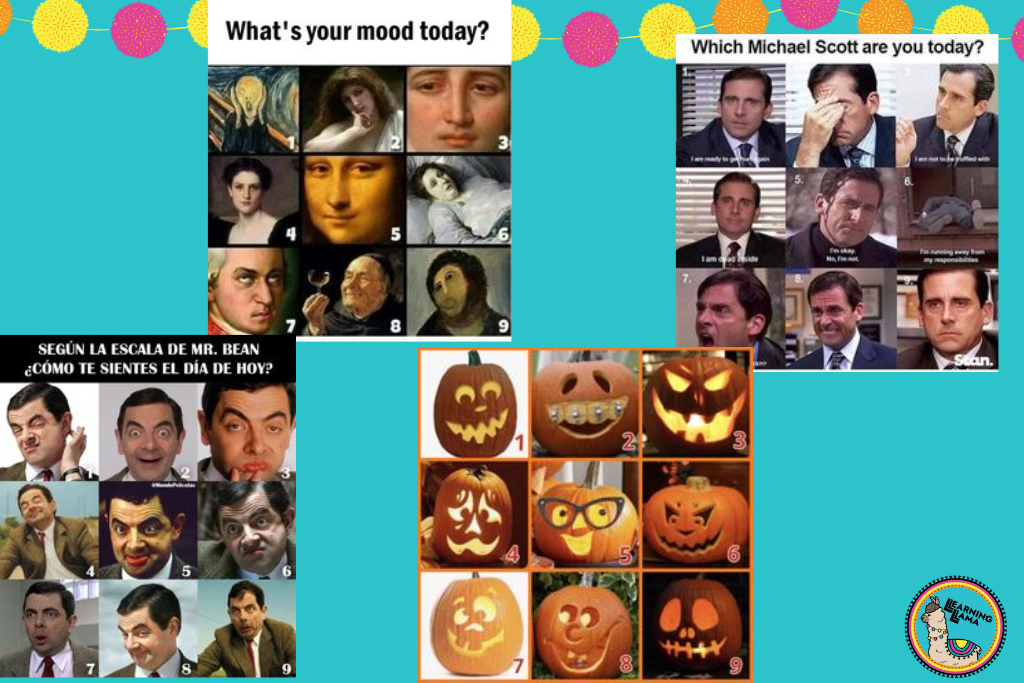
How do I keep students in the target language during social emotional learning activities?
Present the emotional check-in image on your screen and as students enter the classroom, they will begin thinking about how they are feeling that day!
Before you ask students to share their emotions for the day, take a minute to go over each of the 9 images. In the target language, have students label the emotions they see: (cansado, triste, feliz). You could even try to implement one new vocabulary word per day or week to advance their vocabulary, such as deprimido instead of triste or exhausto instead of cansado.
Then, you’re ready to get them talking! Depending on the level of students, you may modify what you want them to say. With lower level students, simply saying the number in Spanish will be a success (especially during a numbers unit!) For novice or even intermediate students, you might want to provide them with some sentence starters. Take a look at this example below. As students write down their response or discuss in a small group, encourage them to use these phrases, but add more details of their own. With advanced students, you might not need to provide any assistance. They hopefully can describe their emotions on their own in the target language.
Over time, students will start to learn these social emotional words and even the phrases to explain why they feel that way!
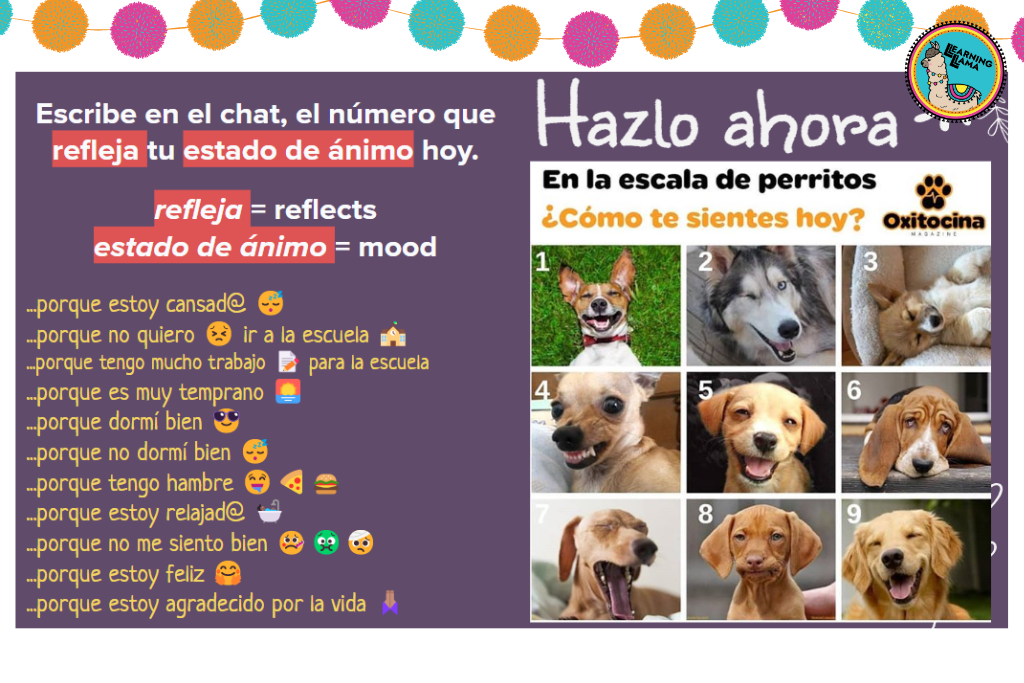
What can I do with social emotional check in images?
Daily Journal
I always have my students write in a daily Do Now book or in the zoom chat. They are encouraged to write complete sentences and give a detailed explanation. If they’re comfortable, then they can share aloud their responses.
Move Around
If you plan on using these images a lot, post the numbers 1-9 around your classroom. Students can stand up and move to the number that corresponds to their emotion. This gets them awake at the beginning of class, and they can share their feelings with like-minded students. But if you’re short on time, just holding up the amount of fingers can be a good visual check-in, too!
Post-It Notes
If you are projecting the image on the screen, give every student a post-it note and they can stick it on the image for how they feel that day. Feel free to leave it anonymous or have them write their initials on the sticky notes. Here are other ideas for using sticky notes in the classroom.
Create their own!
For this, students will create their own set of 9 social emotional images. They can work in pairs or small groups to come up with a theme like Spongebob, art, athletes, etc. I recommend using PowerPoint or Canva to start with a blank slate. They should search for 9 images that fit the theme they came up with, and make sure they label them with numbers 1-9. Then, they will share theirs with the class or you can ask them to share them with you and each day, you choose a new group’s work to showcase! They will feel so proud when their work is used for the daily SEL check in!
Classroom Decor for Social Emotional Learning
A subtle way to introduce social emotional learning to your world language students is through classroom decor. During my second year of teaching I knew I had to make a change to my classroom decor to provide students with more input. After one year of hearing students only ever answer ¿Cómo estás? with “bien,” I thought I was going crazy! So, I made a bulletin board with emojis and a variety of new vocabulary terms for my students to use to describe their feelings. Learn more about that and other classroom decor word walls here.
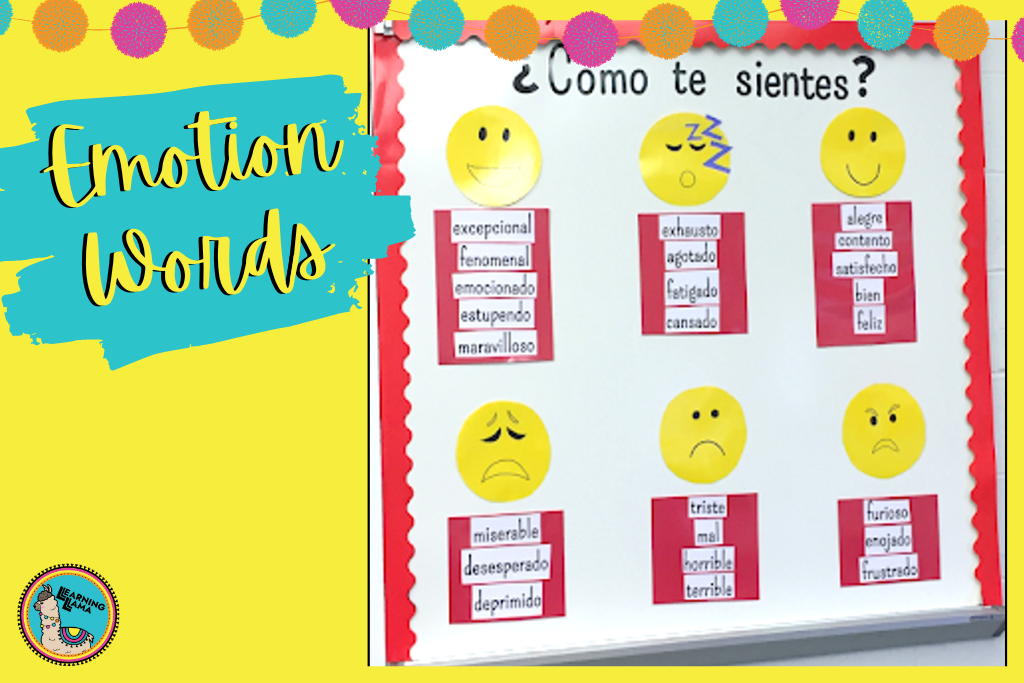
In addition to this being used just as an SEL check in, you can also use it as a reference when reading short stories and describing characters. Students will expand upon their vocabulary without even realizing they are studying and learning new words! They simply glance at the bulletin board and overtime acquire new language!
And with that… one simple image your students will share their emotions with you in a fun, new way every day! Related to pop culture, memes, and animals, your students will be excited to share how they are feeling with these activities for social emotional learning. Feel free to share your favorite mood scale images with me below! I’m always looking for new ones to add to my collection. It is such an easy way to incorporate activities for social emotional learning in your classroom and keep students in the target language. It will also make them laugh and administrators will love it, too!
